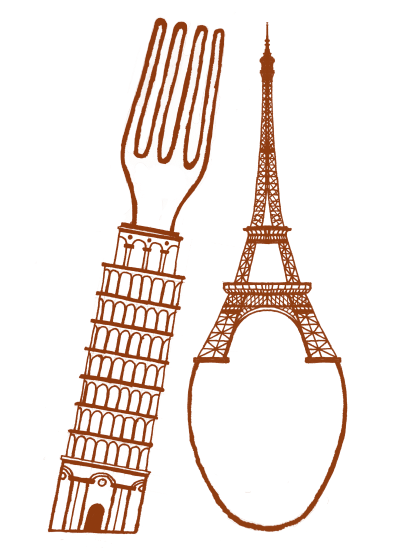Le présent de l'indicatif - Introduction lesson on the present tense in French. This lesson will tackle the regular verbs. Salut! Welcome to an important step in the French grammar. By the end of this lesson, you will be more confident and have better knowledge of how to conjugate le Présent de l'Indicatif - the Present Indicative. If you haven't followed the previous lessons on verbs, I suggest you do that now because those two lessons will give you the basis for today's lesson. You can find the verb Se presenter here and the Auxiliary verbs Être and Avoir here.
In today's lesson, we're concentrating on the three ending of the Infinitive verbs in French. We'll tackle the regular verbs. There will be a following lesson on the irregular present tense verbs.
1. Première Étape
There are three types of ending for the Present Indicative in French: -ER, -IR, -RE. If the verb is regular, the ending is removed and a set of endings is added.
The -ER verbs : Parler (to talk)
Je
Tu
Il/Elle/On
Nous
Vous
Ils/Elles
parl +
parl +
parl +
parl +
parl +
parl +
e
es
e
ons
ez
ent
= parle
= parles
= parle
= parlons
= parlez
= parlent
The -IR verbs: Finir (to finish)
Je
Tu
Il/Elle/On
Nous
Vous
Ils/Elles
fin +
fin +
fin +
fin +
fin +
fin +
is
is
it
issons
issez
issent
= finis
= finis
= finit
= finissons
= finissez
= finissent
The -RE verbs: Attendre (to wait for)
Je/J'
Tu
Il/Elle/On
Nous
Vous
Ils/Elles
attend +
attend +
attend +
attend +
attend +
attend +
s
s
-
ons
ez
ent
= attends
= attends
= attend
= attendons
= attendez
= attendent
2. Deuxième Étape
- There are some verbs that end in -ger. These need an extra -e in front of the ending of the first person plural (Nous).
Examples
Manger (to eat) - Nous mangeons
Nager (to swim) - Nous nageons
- Another exception is the verb ENVOYER (to send). In some cases, the -y needs to be removed. Here is the verb worked out:
J' envoie
Tu envoies
Il/Elle/On envoie
Nous envoyons
Vous envoyez
Ils/Elles envoient
3. Troisième Étape
The Present Indicative is used in a number of different cases. The following are the most common cases:
- A current action or state of being
Je porte des lunettes. (I wear glasses)
- A habitual action or state of being
Il joue au foot tous les samedis. (He plays football every Saturday)
- An action about to occur
Elles finissent le collège demain. (They finish college tomorrow)
- An absolute or general truth
Le soleil se lève à est. (The sun goes up/rises in the east)
This verb is somewhat different and we've already seen another one similar in the past- S'appeler (to be called). These are called Reflexive verbs, meaning that the action is done on oneself. Examples: Se lever (to get up), Se laver (to wash yourself), S'habiller (to dress yourself).
- Conditions in likely situations (Si clause)
Si tu partes en retard, tu vas (irregular verb) perdre le train.
That's all for today's lesson. There will be more lessons in the coming weeks on this topic as it's such an important step in your journey of learning French. If you have any questions, please feel free to leave them in the comments below. I will see you next week with another lesson. Now go ahead and click the link below, download the worksheet and practice the present tense.
